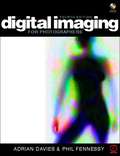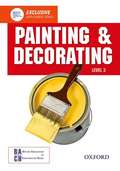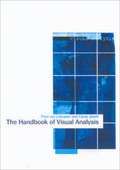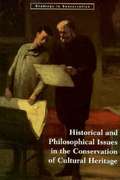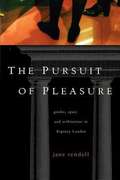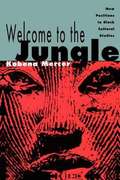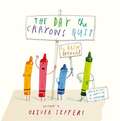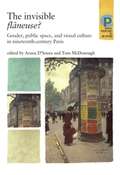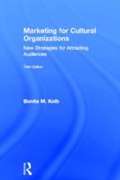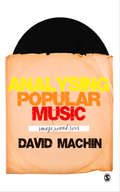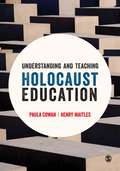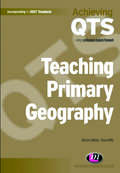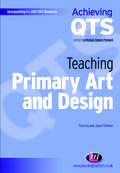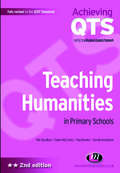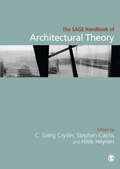- Table View
- List View
Digital Imaging For Photographers
by Adrian Davies Phil FennessyThis authoritative, best-selling guide provides both professional and amateur photographers worldwide with a comprehensive introduction to the technologies and techniques of digital imaging. Features: * An in-depth overview of image capture with digital cameras and scanners* Hardware and software considerations* The digital darkroom - image processing with examples from Adobe Photoshop, showing how to achieve the highest quality images* Printing digital images* Colour management issues This completely revised and updated fourth edition, with the latest information on cameras, printers and image processing techniques, is also illustrated throughout with full colour images for the first time. The free CD-ROM contains many of these images so that you can practice the techniques in the book, as well as new examples of some the other issues discussed. Specially produced animations show the operation of charge coupled devices (CCDs) and software provided includes NIH Image (Scion Image for PC), invaluable for technical photographers to process and analyse their images. If you are considering investing in digital imaging equipment, or want to understand more about this subject, this book will offer you authoritative, first-hand advice. Adrian Davies is Deputy Head of the Department of Arts, Media and General Education at North East Surrey College of Technology, where he has introduced various courses on digital imaging. He writes regularly for a number of magazines and speaks at various conferences and exhibitions, as well as being an active wildlife and natural history photographer. Phil Fennessy is Digital Capture Development Manager for Eastman Kodak.
Painting and Decorating Level 3 Diploma Student Book 1 (PDF)
by British Association of Construction HeadsThis text has been developed in partnership with the British Association of Construction Heads (BACH) to bring you up-to-date and expert knowledge of painting and decorating. Written for the Cskills Awards level 3 diploma in painting and decorating, it is also suitable for the equivalent C & G specification.
The Handbook Of Visual Analysis (PDF)
by Theo Van Leeuwen Carey JewittThe Handbook of Visual Analysis is a rich methodological resource for students, academics, researchers and professionals interested in investigating the visual representation of socially significant issues. The Handbook: #65533; Offers a wide-range of methods for visual analysis: content analysis, historical analysis, structuralist analysis, iconography, psychoanalysis, social semiotic analysis, film analysis and ethnomethodology #65533; Shows how each method can be applied for the purposes of specific research projects. #65533; Exemplifies each approach through detailed analyses of a variety of data, including, newspaper images, family photos, drawings, art works and cartoons. #65533; Includes examples from the authors' own research and professional practice. The Handbook of Visual Analysis which demonstrates the importance of visual data within the social sciences offers an essential guide to those working in a range of disciplines including: media and communication studies, sociology, anthropology, education, psychoanalysis, and health studies.
Historical And Philosophical Issues In The Conservation Of Cultural Heritage
by Nicholas S. Price M. Kirby Talley Alessandra Melucco VaccaroThis is the first comprehensive collection of texts on the conservation of art and architecture to be published in the English language. Designed for students of art history as well as conservation, the book consists of forty-five texts, some never before translated into English and many originally published only in obscure or foreign journals. The thirty major art historians and scholars represented raise questions such as when to restore, what to preserve, and how to maintain aesthetic character. Readings come from the work of such writers as Ruskin, Berenson, Clive Bell, Cesare Brandi, Kenneth Clark, Erwin Panofsky, E. H. Gombrich, Marie Cl. Berducou, and Paul Philippot. The fully illustrated book also contains references, a glossary of terms, and an index.
The Pursuit Of Pleasure (PDF)
by Jane RendellThe Pursuit of Pleasure presents the figures of the rambler and the cyprian, the Eighteenth Century precursors to the Parisian flGneur and prostitute. The urban spaces traced by these figures were the clubs, sporting venues, operas, assembly rooms, street.
Welcome To The Jungle: New Positions In Black Cultural Studies (PDF)
by Kobena MercerWelcome to the Jungle brings a black British perspective to the critical reading of a wide range of cultural texts, events and experiences arising from volatile transformations in the politics of ethnicity, sexuality and "race" during the 1980s. The ten essays collected here examine new forms of cultural expression in black film, photography and visual art exerging with a new generation of black British artists, and interprets this prolific creativity within a sociological framework that reveals fresh perspectives on the bewildering complexity of identity and diversity in an era of postmodernity. Kobena Mercer documents a wealth of insights opened up by the overlapping of Asian, African and Caribbean cultures that constitute Black Britain as a unique domain of diaspora.
Welcome To The Jungle: New Positions In Black Cultural Studies
by Kobena MercerWelcome to the Jungle brings a black British perspective to the critical reading of a wide range of cultural texts, events and experiences arising from volatile transformations in the politics of ethnicity, sexuality and "race" during the 1980s. The ten essays collected here examine new forms of cultural expression in black film, photography and visual art exerging with a new generation of black British artists, and interprets this prolific creativity within a sociological framework that reveals fresh perspectives on the bewildering complexity of identity and diversity in an era of postmodernity. Kobena Mercer documents a wealth of insights opened up by the overlapping of Asian, African and Caribbean cultures that constitute Black Britain as a unique domain of diaspora.
The Day The Crayons Quit (PDF)
by Drew Daywalt Oliver JeffersDrew Daywalt and Oliver Jeffers team up to create a colourful solution to a crayon-based crisis in this playful, imaginative story that will have children laughing and playing with their crayons in a whole new way. 9780399255373
The Invisible Flaneuse?: Gender, Public Space and Visual Culture in Nineteenth Century Paris (PDF)
by Aruna D'Souza Tom McdonoughThis collection of essays revisits gender and urban modernity in nineteenth-century Paris in the wake of changes to the fabric of the city and social life. In rethinking the figure of the flaneur, the contributors apply the most current thinking in literature and urban studies to anexamination of visual culture of the period, including painting, caricature, illustrated magazines, and posters. Using a variety of approaches, the collection re-examines the long-held belief that life in Paris was divided according to strict gender norms, with men free to roam in public space whilewomen were restricted to the privacy of the domestic sphere. Framed by essays by Janet Wolff and Linda Nochlin - two scholars whose work has been central to the investigation of gender and representation in the nineteenth century - this collection brings together new methods of looking at visual culture with a more nuanced way of picturing city life.
Marketing for Cultural Organizations: New Strategies for Attracting Audiences (3rd edition)
by Bonita M. KolbThis title presents traditional marketing theory with a focus on the aspects most relevant to arts or cultural organizations. The book explains how to overcome the division between the concepts of high art and popular culture by targeting the new tech savvy cultural consumer. 9780415626972 9780203102367
Analysing Popular Music: Image, Sound and Text
by David MachinElectronic Inspection Copy available for instructors here Popular music is far more than just songs we listen to; its meanings are also in album covers, lyrics, subcultures, voices and video soundscapes. Like language these elements can be used to communicate complex cultural ideas, values, concepts and identities. Analysing Popular Music is a lively look at the semiotic resources found in the sounds, visuals and words that comprise the 'code book' of popular music. It explains exactly how popular music comes to mean so much. Packed with examples, exercises and a glossary, this book provides the reader with the knowledge and skills they need to carry out their own analyses of songs, soundtracks, lyrics and album covers. Written for students with no prior musical knowledge, Analysing Popular Music is the perfect toolkit for students in sociology, media and communication studies to analyse, understand - and celebrate - popular music.
Understanding and Teaching Holocaust Education (1st edition)
by Paula Cowan Professor Henry MaitlesThe Holocaust is a controversial and difficult teaching topic that needs to be approached sensitively and with an awareness of the complex and emotive issues involved. This book offers pragmatic pedagogical and classroom-based guidance for teachers and trainee teachers on how to intelligently teach holocaust education in a meaningful and age-appropriate way. Key coverage includes: Practical approaches and useful resources for teaching in schools; Holocaust education and citizenship; Holocaust remembrance as an educational opportunity; How to explore the topic of anti-semitism in the classroom; Exploring international perspectives on holocaust education. Related ISBN: 9781473988026 (EPUB).
Teaching Primary Geography
by Professor Simon J Catling Tessa WillyWritten with reference to the 2007 Professional Standards for the Award of QTS and initiatives such as the Primary National Strategy, each chapter offers practical guidance on topics such as planning, assessment and the creation of resources. It provides summaries of key topics in primary geography, including the study of places, environmental sustainability, learning beyond the classroom, global issues, citizenship and cross-curricular approaches to promote children's subject knowledge, well-being and learning within primary geography. With research summaries, practical and reflective tasks, and classroom examples, this book helps trainees and NQTs teach primary geography confidently and creatively throughout the primary school.
Teaching Primary Art and Design
by Paul Key Jayne StillmanThis book introduces trainees and newly qualified primary teachers to the teaching of art and design in primary schools. It helps students gain an appreciation of what constitutes good practice in primary art and design and how they can go about achieving it. To meet the different needs of students, the book identifies varying levels of experience, creativity and confidence, and offers suggestions for applying these levels to the classroom. The book covers key areas of the art and design curriculum for Early Years Foundation Stage, Key Stage 1 and Key Stage 2, considering both their discrete and developmental characteristics.
Teaching Humanities in Primary Schools
by Susan Bermingham Paul Bowen Pat Hoodless Elaine MccreeryThis book supports primary trainees in their learning and teaching approach to the core humanities subjects: geography, history and religion. It promotes an integrated approach to these subject areas and encourages trainees to reflect on the links between subjects, across the curriculum from the Early Years Foundation Stage through to Key Stage 2. This edition has been updated to incorporate the revised Professional Standards for the Award of QTS and addresses key initiatives such as Excellence and Enjoyment, Every Child Matters and the Primary National Strategy for Literacy and Mathematics.
The SAGE Handbook of Architectural Theory
by Stephen Cairns Hilde Heynen Greig Crysler"Offers an intense scholarly experience in its comprehensiveness, its variety of voices and its formal organization... the editors took a risk, experimented and have delivered a much-needed resource that upends the status-quo." - Architectural Histories, journal of the European Architectural History Network "Architectural theory interweaves interdisciplinary understandings with different practices, intentions and ways of knowing. This handbook provides a lucid and comprehensive introduction to this challenging and shifting terrain, and will be of great interest to students, academics and practitioners alike." - Professor Iain Borden, UCL Bartlett School of Architecture "In this collection, architectural theory expands outward to interact with adjacent discourses such as sustainability, conservation, spatial practices, virtual technologies, and more. We have in The Handbook of Architectural Theory an example of the extreme generosity of architectural theory. It is a volume that designers and scholars of many stripes will welcome." - K. Michael Hays, Eliot Noyes Professor of Architectural Theory, Harvard University The SAGE Handbook of Architectural Theory documents and builds upon the most innovative developments in architectural theory over the last two decades. Bringing into dialogue a range of geographically, institutionally and historically competing positions, it examines and explores parallel debates in related fields. The book is divided into eight sections: Power/Difference/Embodiment Aesthetics/Pleasure/Excess Nation/World/Spectacle History/Memory/Tradition Design/Production/Practice Science/Technology/Virtuality Nature/Ecology/Sustainability City/Metropolis/Territory. Creating openings for future lines of inquiry and establishing the basis for new directions for education, research and practice, the book is organized around specific case studies to provide a critical, interpretive and speculative enquiry into the relevant debates in architectural theory.
Understanding and Teaching Holocaust Education (1st edition) (PDF)
by Paula Cowan Professor Henry MaitlesThe Holocaust is a controversial and difficult teaching topic that needs to be approached sensitively and with an awareness of the complex and emotive issues involved. This book offers pragmatic pedagogical and classroom-based guidance for teachers and trainee teachers on how to intelligently teach holocaust education in a meaningful and age-appropriate way. Key coverage includes: Practical approaches and useful resources for teaching in schools; Holocaust education and citizenship; Holocaust remembrance as an educational opportunity; How to explore the topic of anti-semitism in the classroom; Exploring international perspectives on holocaust education. Related ISBN: 9781473988026 (EPUB), 9781473987265 (PDF).
Kali (SEB Contracted)
by RnibEarly 20th century. Santal region of eastern Bihar/western Bengal. Scroll - paint on recycled paper. Size: 107 cm long and 20 cm wide. Museum number: 1988. 7-3. 06. Although crudely executed this picture shows Kalis true nature: fascinating but frightening and attended by terrifying goblins. The scroll comes from the tribal Santal zone in western Bengal. Here scrolls are used both for storytelling and for death rituals. This one is part of a group of seven that was acquired by a British school-teacher stationed in this then remote area. The dominate colours on this painting are black and red, along with tones of blue and brown. The image of Kali fills the top two thirds of this long, narrow picture. She is shown facing the viewer with her feet turned slightly to her right. Kali is standing on the left arm of a male figure, her husband Shiva, who is lying on his back. Two black goblins are shown below Shiva. Kali is depicted naked with a black body. Two areas of her body appear transparent, a strip around her hips and the upper half of her body extending a short way down her arms, as the background of the painting can be seen through these areas. The black areas of the body also have small red patches on the knees, elbows and feet. Her head is black with white eyes and black pupils, white teeth, a red moustache and long red protruding tongue. She has large ears with three holes in each with hoop earrings through the lower holes. Her hair is beaded and pulled upwards into spikes which looks like a crown. Kali has four arms, two are down by her side and two are held above her head. Each arm has a wide bangle at the wrist and bands on the upper arm. In her lower left hand, she is holding a severed head. Around her neck and descending down to her knees is a large garland that is made up of more severed heads. There are thick anklets around each ankle. The tactile image focuses solely on Kali. The black area of her body and head are shown with solid texture along with her crown-like hair and the hand-held severed head. The eyes, holes in the ears, teeth, protruding tongue, bangles, arm bands and anklets are shown as hollows in the solid texture. The garland of severed heads is shown as a rough texture with hollows for individual heads. Braille labels: upper right arm, upper left arm, letter p (for protruding tongue), lower right arm, lower left arm, garland of severed heads, severed head, arm band, wrist band and anklet on left leg."
A seated male nude twisting around (tactile)
by RnibAbout 1504-1505. Pen and brown ink, brown and grey wash, heightened with lead white (partly discoloured) over leadpoint and stylus. Size: 42.1 x 28.7 cm. British Museum, PD 1887-5-2-116. This is one of several drawings exhibited here for Michelangelo's ""Bathers"" cartoon, the centrepiece of the never executed fresco of the Battle of Cascina for the Palazzo Vecchio, Florence. This is a life study for the pivotal figure seated at the centre of the composition. The way Michelangelo has used pen and white heightening to describe the model's glistening limbs is highly effective. However, his use of wash for the shaded area is less successful. This drawing shows a seated male nude with his legs and knees facing the viewer but with torso and head turned away from the viewer. His right arm is bent at the elbow and is raised to head height. His left arm is not shown as this is out of sight behind his torso. The figure's right leg is bent at the knee and is resting on the seat. The detail on the drawing is concentrated on the legs and twisting torso. The head and right hand are less defined, with the seat barely shown. The tactile image shows an outline of the figure defined by thick lines with muscle tone shown as rough texture. Thin lines give an idea where the seat is. Braille labels have been added: head, shoulder, right arm, buttocks, right leg, left leg and seat.
A flying angel and other studies (tactile)
by RnibAbout 1534-1536. Black chalk. Size: 40.7 x 27.2 cm. British Museum, PD 1860-6-16-5. The main study and the arm at the upper right relate to figures in the ""Last Judgement"". Both are for a flying angel in the upper right corner. Michelangelo must already have worked out the overall group: he did not include the tips of the right-hand fingers, because he knew they would be hidden by another figure in the finished work. This drawing is a collection of incomplete sketches of various nude poses and body detail. The most complete sketch consists of a nude figure that looks like it is flying in mid air. The arms are slightly bent at the elbows and are shown reaching out in front of the figure, with the fingers splayed. The left leg is bent back at the knee. The right leg is not shown along with the tips of the fingers on the right hand. The tactile image only shows the most complete figure. The outline of the figure is defined by thick lines with muscle tone shown as rough texture. Braille labels have been added: head, back, right arm, left hand, buttocks, right leg, and left leg.
A single lens reflex (UEB contracted)
by RnibThis is a cross section side view of a single lens reflex camera seen from the side with a labelled enlargement of the mirror, and a key. There is a locator dot shown, which will be at the top left of the page when the image is the correct way up. The camera can be found in the bottom left of the page. A ray of light enters the camera through the lenses at the right of the image. It is represented by a left-pointing arrow. The ray then strikes the mirror to the left, which is angled at 45 degrees. The ray is then reflected through 90 degrees up the page to the pentaprism (five-sided prism), where it is reflected off two of the internal surfaces and exits left through the viewfinder lens at the top left of the image. To the left of the viewfinder is an eye seen from the side and facing to the right. The ray enters the eye and projects an image on the retina (not shown) on the left of the eye. Part of the mirror in the centre of the camera's image is circled with a dashed line with a line going up and right to another dashed-line circle containing an enlarged view of the mirror section. The light ray is shown being reflected off the surface of the mirror. The angles of incidence and reflection are labelled with abbreviations, and there is a key to the abbreviations in the top left of the page.
A single lens reflex (UEB uncontracted)
by RnibThis is a cross section side view of a single lens reflex camera seen from the side with a labelled enlargement of the mirror, and a key. There is a locator dot shown, which will be at the top left of the page when the image is the correct way up. The camera can be found in the bottom left of the page. A ray of light enters the camera through the lenses at the right of the image. It is represented by a left-pointing arrow. The ray then strikes the mirror to the left, which is angled at 45 degrees. The ray is then reflected through 90 degrees up the page to the pentaprism (five-sided prism), where it is reflected off two of the internal surfaces and exits left through the viewfinder lens at the top left of the image. To the left of the viewfinder is an eye seen from the side and facing to the right. The ray enters the eye and projects an image on the retina (not shown) on the left of the eye. Part of the mirror in the centre of the camera's image is circled with a dashed line with a line going up and right to another dashed-line circle containing an enlarged view of the mirror section. The light ray is shown being reflected off the surface of the mirror. The angles of incidence and reflection are labelled with abbreviations, and there is a key to the abbreviations in the top left of the page.
A single lens reflex (large print)
by RnibThis is a cross section side view of a single lens reflex camera seen from the side with a labelled enlargement of the mirror, and a key. There is a locator dot shown, which will be at the top left of the page when the image is the correct way up. The camera can be found in the bottom left of the page. A ray of light enters the camera through the lenses at the right of the image. It is represented by a left-pointing arrow. The ray then strikes the mirror to the left, which is angled at 45 degrees. The ray is then reflected through 90 degrees up the page to the pentaprism (five-sided prism), where it is reflected off two of the internal surfaces and exits left through the viewfinder lens at the top left of the image. To the left of the viewfinder is an eye seen from the side and facing to the right. The ray enters the eye and projects an image on the retina (not shown) on the left of the eye. Part of the mirror in the centre of the camera's image is circled with a dashed line with a line going up and right to another dashed-line circle containing an enlarged view of the mirror section. The light ray is shown being reflected off the surface of the mirror. The angles of incidence and reflection are labelled with abbreviations, and there is a key to the abbreviations in the top left of the page.
Ambassadors by Hans Holbein the Younger (tactile)
by RnibDate: 1533. Medium: Oil on oak. Size: 207 cm high by 210cm wide. Information about the painting The painting portrays two educated, wealthy and powerful diplomats; Jean de Dintville, the French Ambassador to England and his friend, George de Selve, Bishop of Lavaur. Both men were in London in 1533 to safeguard relations between the King of France and Henry VIII at a time of great religious and political uncertainty. Jean de Dinteville commissioned this painting from Holbein (1497/8-1543) to hang in his chateau of Polisy. Overview description of the painting [The letter/letters given in brackets refer to labelling on the tactile images.] This huge panel, painted with meticulous attention to detail is one of the earliest portraits combining the depiction of two full-length figures that are also life-size in scale. Jean de Dentville is on our left and George de Selve on the right. They stand a step back from us on a pavement patterned with coloured pieces of stone, similar to the floor in Westminster Abbey. Facing to the front, they gaze out of the painting and engage us with inscrutable expressions. Between them is a large piece of furniture with two shelves on which are arrayed a variety of objects, giving an indication of their wide-ranging interests. Jean de Dentville rests his left elbow (LE) and George de Selve his right on the top shelf (R). At the bottom near the left corner of the painting, the perplexing image of a distorted skull stretches diagonally across the foreground to the right. Behind the two men, a rich, green damask curtain is parted in the top left corner to reveal a tiny silver crucifix (CF).
Andrea Quaratesi (tactile)
by RnibAbout 1528-1532. Black chalk. Size: 41.1 x 29.2 cm. British Museum, PD 1895-9-15-519. Quaratesi was from a rich Florentine banking family, and Michelangelo gave him drawing lessons in the mid-1520s (see image 6). The family reputedly sheltered the artist when the second Florentine republic fell in 1530 and the Medici regained power. The sitters identity is known from an inscription on an old copy of the drawing, making this the only certainly identifiable portrait by Michelangelo. The drawing is a detailed head and shoulders portrait of a young man dressed in costume of the period - a large flat hat, collared jacket with slightly puffed sleeves and a shirt with buttons under the jacket. His left shoulder is facing the viewer, his head turned slightly to his left. He is not looking directly at the viewer as he is looking over towards his left and has a very solemn look on his face. The tactile image uses lines to define the outline of the face and facial features with a solid texture to show the hat, buttons on shirt and collar of his jacket. Rough texture shows the hair, eyebrows and jacket. Braille labels are as follows: hat, ear, mouth, eye, nose, collar, and jacket.
